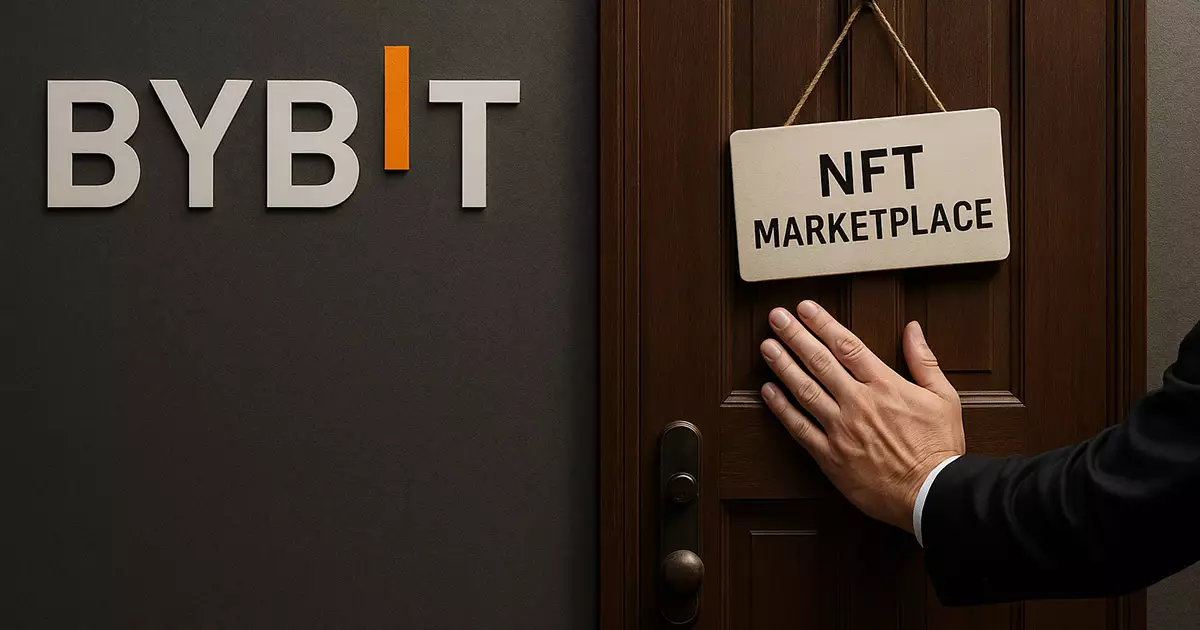The recent decision by Bybit to close its NFT Marketplace, alongside its Inscription Marketplace and Initial DEX Offering (IDO) pages, reverberates through the crypto landscape, an echo of a once-thriving digital collectibles dream that has turned into a harsh reality. The closure, effective from April 8 at 16:00 UTC, has resulted from a desperate need to simplify offerings and enhance the user experience on Bybit’s platform. Still, one cannot help but see this as a distressing capitulation in a landscape characterized by rapid deterioration.
In 2021, the vibrant buzz surrounding NFTs seduced countless investors and creators, offering an exhilarating promise of a digital renaissance. However, recent statistics unchecked by exuberance unveil a chilling truth: the trading volumes for top NFT collections have plunged over 95%. Even more startling, the number of active trading wallets slumped from over half a million to barely 20,000. These figures raise pressing questions regarding the stability and longevity of the non-fungible token sector.
Institutional Retreat: A Clear Signal
Bybit’s exit is not an isolated incident but part of a broader tide washing away institutional interest in NFTs. With Kraken shuttering its NFT marketplace and giants like LG Electronics pulling the plug on its LG Art Lab after three years, it is evident that even industry stalwarts are wary of further investments in an unreliable market. The NFT industry that once showcased collections like Bored Ape Yacht Club is merely a shell of its former self, with surprisingly low trading activity. This trend underscores increasing investor skepticism about the long-term viability of NFTs.
The statistics are sobering: total NFT sales plummeted to a mere $1.5 billion in the first quarter, a staggering 63% drop from the previous year’s comparable period. A further analysis shows that March sales alone receded by a jaw-dropping 76%. Despite the existence of niche collections such as Pudgy Penguins and Doodles that saw minor upticks, the overarching view remains without rosy glasses—the golden age of NFTs may be history.
Security Woes and Market Collapse: The Perfect Storm
The decision to wind down the NFT Marketplace at Bybit could indicate deeper issues beyond falling demand. Recent turbulence stemming from a massive security breach linked to North Korean hackers, who pilfered an estimated $1.4 billion in assets, has intensified scrutiny over the operational framework of these platforms. The specter of increased risk might have prompted Bybit to refocus its strategy. It is crucial to acknowledge that the dual threats of dwindling interest and increasing security vulnerabilities form a perilous web from which many exchanges are struggling to extricate themselves.
The current landscape illuminated by stark numbers tells a story of a sector that once tantalized investors with promises of revolutionary ownership models but now stands vulnerable, defending itself against skepticism and security threats. The remaining projects that flourish in this environment may provide temporary respite but do little to mask the fading enthusiasm for NFTs as a whole.
Moving forward, as Bybit and others navigate these murky waters, one must question the future of digital ownership and whether we are witnessing the last gasp of an overly ambitious vision or merely an evolution towards something more sustainable and secure. The departure of significant players raises the critical need for a recalibration of expectations in the digital economy. It forces us to confront the uncomfortable truths underlying the allure of NFTs that once promised to define a new era of engagement and ownership.















